Are you looking to bring a sense of calm and focus into your life? Incorporating meditation into your daily routine might just be the solution you need. This blog post will guide you through understanding meditation, its benefits, and practical tips on how to make it a part of your everyday life. Keep reading to discover how to transform your life with the power of meditation.
Key Takeaways
- Understanding the basics of meditation
- The numerous benefits of daily meditation
- How to prepare for meditation
- Practical tips for incorporating meditation into daily life
- Overcoming common challenges in meditation
- Advanced meditation practices
- Sustaining a meditation practice long-term
- Resources for further learning
Understanding Meditation
Definition of Meditation
Meditation is a practice where an individual uses a technique – such as mindfulness, or focusing the mind on a particular object, thought, or activity – to train attention and awareness, and achieve a mentally clear and emotionally calm and stable state.
Historical Background
Meditation has been practiced since antiquity in numerous religious traditions and beliefs, often as part of the path towards enlightenment and self-realization. The earliest records of meditation (dhyana) come from the Hindu traditions of Vedantism, around 1500 BCE.
Different Types of Meditation
There are many types of meditation, including mindfulness meditation, spiritual meditation, focused meditation, movement meditation, mantra meditation, and transcendental meditation. Each type has its unique characteristics and benefits.

Benefits of Meditation
Mental Health Improvements
Stress Reduction
Regular meditation can help reduce levels of stress and anxiety, promoting a sense of calm and relaxation. It’s a natural stress stabilizer that can be practiced anywhere, anytime. Check out our post on the benefits of regular meditation practice for stress reduction here.
Anxiety Control
Meditation can help manage anxiety and its associated disorders. By focusing on the present, meditation can reduce the negative effects of anxiety and improve emotional well-being.
Enhanced Focus
Meditation can improve concentration and focus, leading to increased productivity in daily tasks. It’s a great tool for students and professionals alike.
Physical Health Benefits
Lower Blood Pressure
Meditation can help lower blood pressure by promoting relaxation, which in turn helps the blood vessels to expand, reducing the pressure on their walls.
Improved Sleep
Meditation can help improve sleep quality by helping you control the “runaway” thoughts that can lead to insomnia. Additionally, it can help relax your body, releasing tension and placing you in a peaceful state in which you’re more likely to fall asleep.
Pain Management
Meditation can help manage pain by reducing the brain’s response to it. Studies have shown that meditation activates certain areas of the brain in response to pain.
Emotional Well-being
Increased Happiness
Meditation can increase your psychological functioning, leading to increased happiness. It’s a great way to boost your mood and overall sense of well-being.
Better Emotional Regulation
Meditation can help you manage your emotions, increase your ability to regulate your emotions, and improve your ability to respond to stress with a positive attitude.

Preparing for Meditation
Creating a Conducive Environment
Quiet Space
Find a quiet space where you won’t be disturbed during your meditation session. This could be a dedicated room in your house, or even a quiet spot in your garden.
Comfortable Seating
Ensure you have a comfortable place to sit during your meditation. This could be a meditation cushion, chair, or even a yoga mat.
Allocating Time for Practice
Consistent Schedule
Try to meditate at the same time each day. This helps to establish a routine and makes it easier to maintain the habit.
Short Sessions for Beginners
If you’re new to meditation, start with short sessions of around 5-10 minutes. Gradually increase the duration as your concentration improves.
Dressing Comfortably
Wear comfortable clothes that won’t distract you during your meditation. Loose-fitting clothes are often a good choice.
Deciding on a Meditation Type
Choose a type of meditation that suits your lifestyle and preferences. For example, you might prefer mindfulness meditation if you’re looking to improve your focus, or movement meditation if you find stillness challenging.
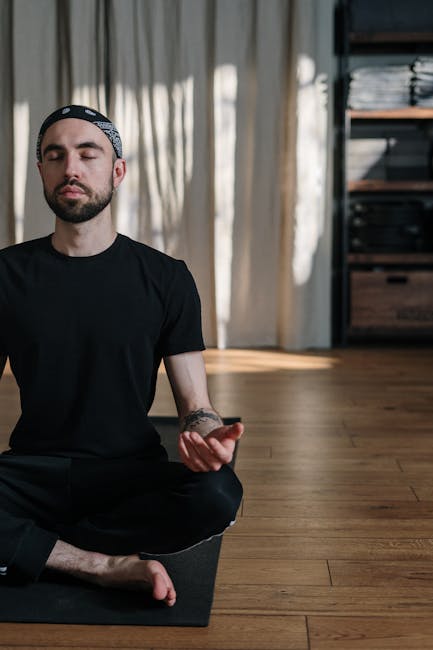
Integrating Meditation into Daily Life
Starting with Short Sessions
One-Minute Meditation
Begin with one-minute meditation sessions. This can be done anytime, anywhere. You can do it while waiting for your coffee to brew, or even while brushing your teeth.
Five-Minute Meditation
Once you’re comfortable with one-minute sessions, move on to five-minute sessions. You can do this first thing in the morning, during your lunch break, or before bed.
Using Daily Activities as Triggers
Morning Routine
Incorporate meditation into your morning routine. This could be after brushing your teeth, or right before your morning shower.
Breaks at Work
Use your breaks at work as an opportunity to meditate. Even a few minutes of meditation can help you feel more focused and refreshed.
Before Bedtime
Meditate before bedtime to help your mind slow down and prepare for sleep. It can be a great way to unwind after a busy day.
Incorporating Mindfulness into Everyday Tasks
Mindful Eating
Practice mindful eating by paying attention to the taste, texture, and smell of your food. This not only helps you enjoy your food more but also helps to improve digestion.
Mindful Walking
Turn your daily walk into a meditative practice by focusing on your steps and the sensation of your feet touching the ground.
Utilizing Technology
Meditation Apps
There are numerous meditation apps available that can guide you through the process. These can be particularly helpful for beginners.
Online Communities and Support
Join online meditation communities for support and motivation. These communities often have experienced meditators who can help answer your questions and guide you on your journey.
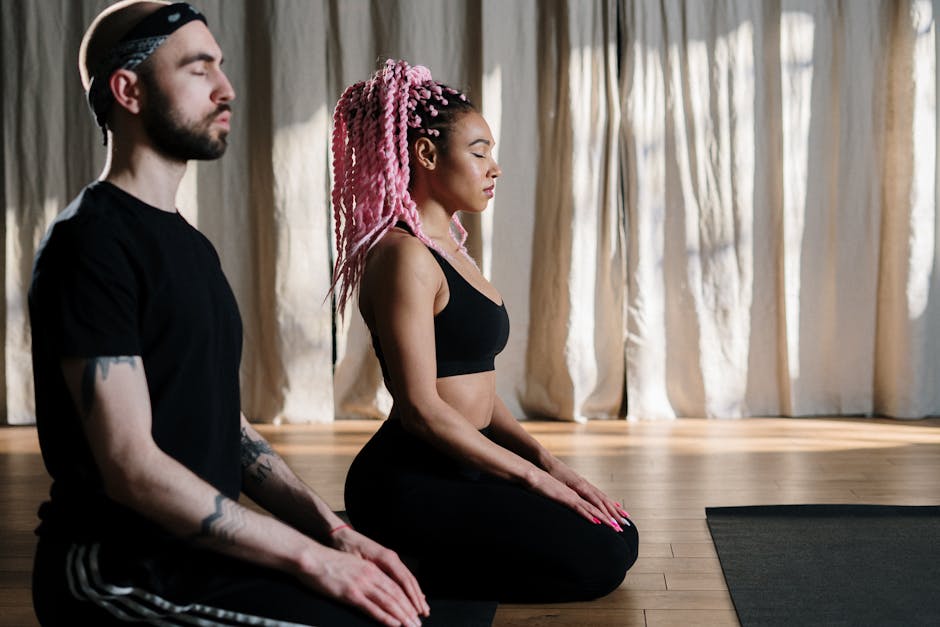
Overcoming Common Challenges
Dealing with Distractions
Acknowledging Interruptions
When distractions occur, simply acknowledge them and gently bring your focus back to your meditation. Remember, the goal of meditation is not to avoid thoughts, but to learn to observe them without judgment.
Gently Returning Focus
If your mind wanders during meditation, gently bring your focus back to your breath, mantra, or whatever you’re focusing on.
Maintaining Consistency
Setting Realistic Goals
Set realistic goals for your meditation practice. Remember, it’s better to meditate for a few minutes every day than to meditate for hours a few times a week.
Tracking Progress
Keep a meditation journal to track your progress. Note down any challenges you face, any improvements you notice, and any insights you gain during your meditation sessions.
Adjusting Expectations
Understanding that Progress is Non-linear
Progress in meditation is often non-linear. Some days you might feel like you’re making a lot of progress, while other days you might feel stuck. This is normal.
Being Patient with Oneself
Be patient with yourself. Meditation is a skill that takes time to develop. Celebrate your small victories and don’t beat yourself up if you miss a session or two.
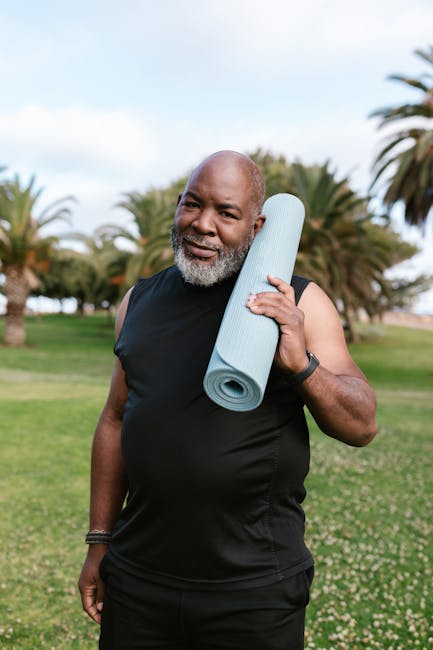
Advanced Meditation Practices
Exploring Different Meditation Techniques
Body Scan Meditation
Body scan meditation is a type of mindfulness meditation where you focus on different parts of your body, starting from the top of your head and moving down to your toes.
Loving-Kindness Meditation
Loving-kindness meditation, also known as Metta meditation, involves focusing on developing feelings of goodwill, kindness, and warmth towards others.
Walking Meditation
Walking meditation involves focusing on the physical sensations of walking, such as the sensation of your feet touching the ground.
Deepening Your Practice
Attending Workshops or Retreats
Consider attending a meditation workshop or retreat to deepen your practice. These can provide you with the opportunity to learn from experienced teachers and connect with other meditators.
Reading Books and Listening to Talks
Expand your knowledge of meditation by reading books and listening to talks on the subject. There are numerous resources available online.
Joining a Meditation Group or Community
Joining a meditation group or community can provide you with the support and motivation you need to maintain your practice. It can also provide you with the opportunity to learn from others’ experiences.
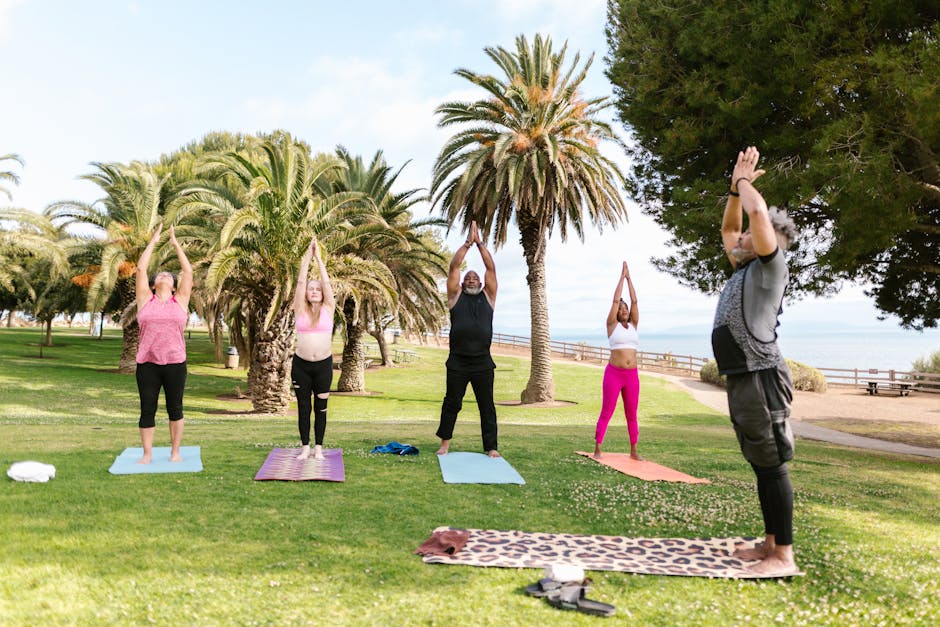
Sustaining a Meditation Practice Long-Term
Reflecting on Personal Benefits
Reflect on the benefits you’ve experienced from meditation. This can motivate you to continue your practice even when you’re facing challenges.
Adapting the Practice as Life Changes
As your life changes, be willing to adapt your meditation practice. For example, if you’re facing a busy period at work, you might choose to meditate for shorter periods or to meditate during your lunch break.
Continuing Education and Growth in Meditation
Continue to learn and grow in your meditation practice. Attend workshops, read books, and connect with other meditators to deepen your understanding and improve your practice.
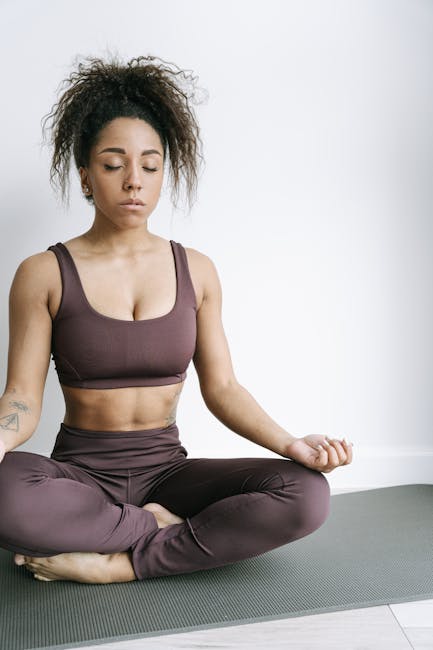
Resources for Further Learning
Recommended Meditation Apps and Websites
There are numerous meditation apps and websites available that can guide you through the process. Some popular ones include Headspace, Calm, and Insight Timer.
Books and Articles on Meditation
There are numerous books and articles available on the subject of meditation. Some popular titles include “The Miracle of Mindfulness” by Thich Nhat Hanh, “Wherever You Go, There You Are” by Jon Kabat-Zinn, and “Mindfulness in Plain English” by Bhante Henepola Gunaratana.
Local and Online Meditation Classes and Groups
Consider joining a local or online meditation class or group. These can provide you with the support and motivation you need to maintain your practice.
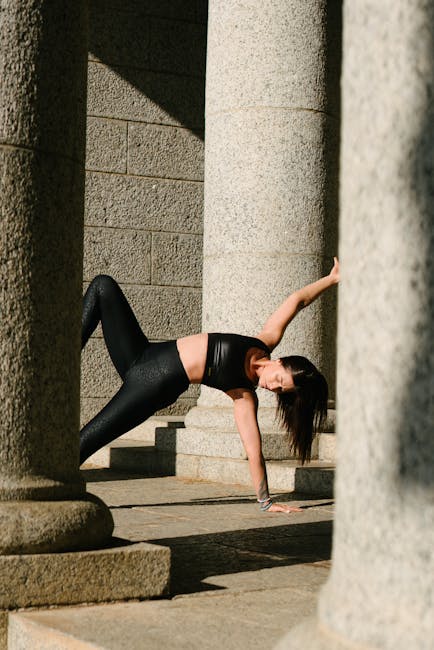
Incorporating meditation into your daily life can be a transformative experience. With patience, consistency, and the right resources, you can start a meditation practice that not only helps you become more present and focused but also improves your overall well-being. Start your meditation journey today and discover the profound impact it can have on your life.
#MeditationTips #MeditationTechniques #EffectiveMeditation #MeditationJourney #MeditationResearch
Sources:
– How to Meditate
– 7 Ways to Easily Incorporate Meditation into Your Life
– Daily Meditation: How to Meditate Every Day
Frequently Asked Questions About Incorporating Meditation into Daily Life
How do I start meditating if I’ve never done it before?
Begin by setting aside just 5 minutes each day in a quiet space where you won’t be disturbed. Sit comfortably, close your eyes, and focus on your breath. Don’t worry about clearing your mind; it’s natural for thoughts to arise. Instead, gently redirect your attention back to your breath whenever you notice your mind wandering.
What is the best time of day to meditate?
The best time to meditate is when it fits consistently into your schedule. Many people find that meditating first thing in the morning helps set a calm tone for the day. Others prefer to meditate during lunch breaks or in the evening as a way to unwind. Experiment with different times to see what works best for you.
Do I need any special equipment to meditate?
No special equipment is necessary to meditate. All you need is a quiet space and a place to sit or lie down comfortably. Some people choose to use cushions, mats, or meditation benches, but these are not required. The key is to be in a position that allows you to relax without falling asleep.
Can I meditate even if I’m busy and don’t have much free time?
Yes, even if you’re busy, you can incorporate meditation into your life. Short, consistent sessions are more beneficial than infrequent, longer ones. Try integrating brief moments of mindfulness throughout your day, such as taking a minute to breathe deeply before a meeting or while waiting in line.
Is it normal for my mind to wander during meditation?
Absolutely. Mind wandering is a normal part of the meditation process. The practice is not about stopping thoughts, but rather noticing when your mind has wandered and gently bringing your focus back to your breath or chosen point of attention.
What are some common meditation techniques for beginners?
For beginners, mindfulness meditation, which involves paying attention to the present moment without judgment, is a great starting point. Another technique is focused attention meditation, where you concentrate on a single point, such as your breath or a mantra. Body scan meditation, where you mentally scan your body for areas of tension, is also a good technique for beginners.
How can I make meditation a consistent habit?
To make meditation a habit, commit to a specific time each day and set reminders for yourself. Start with short sessions and gradually increase the duration as you become more comfortable. Associating meditation with another daily activity, like after brushing your teeth, can also help establish a routine.
Can meditation help with stress?
Yes, meditation is widely recognized for its stress-reducing benefits. It can lower cortisol levels, the hormone associated with stress, and promote a state of relaxation. Regular meditation practice can help you respond to stress with a greater sense of calm and mindfulness.
Should I meditate with my eyes open or closed?
This is a personal preference. Meditating with your eyes closed may help you avoid distractions and focus inward. However, some people prefer to meditate with their eyes slightly open to maintain alertness and prevent drowsiness. Try both methods to see which one suits you better.
What should I do if I find meditation uncomfortable or frustrating?
If meditation feels uncomfortable, adjust your posture or the length of your sessions to find what feels best for you. It’s important to be patient and kind to yourself as you learn. If you’re feeling frustrated, acknowledge the feeling without judgment and bring your focus back to your breath or meditation practice. Remember that challenges are part of the learning process.



